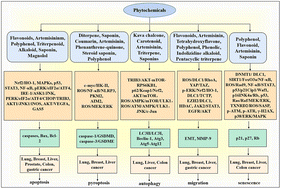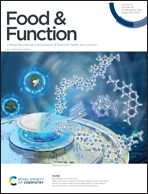Potential roles and molecular mechanisms of phytochemicals against cancer
Abstract
Increasing evidence has been reported regarding phytochemicals, plant secondary metabolites, having therapeutic functions against numerous human diseases. Recently, phytochemicals (flavonoids, polyphenols, terpenoids, alkaloids, saponins, coumarins and so on) have shown promising anti-cancer efficacy with their distinct advantages of high efficiency and low toxicity. They regulate programmed cell death (apoptosis, pyroptosis, and autophagy), migration and senescence-related signaling pathways of cancer via the modulation of reactive oxygen species (ROS), mitogen activated protein kinase (MAPK) pathway, deleted in liver cancer 1 (DLC1), nuclear factor κ light-chain-enhancer of activated B cell (NF-κB) pathways and glycolytic enzymes. Here, we review the molecular mechanisms by which phytochemicals prevent the development of cancer. Furthermore, phytochemicals combined with chemotherapeutic agents could target the crosstalk among multiple signal cascades to block chemoresistance and attenuate carcinogenic properties, and can be considered as a novel and potential therapeutic strategy. Our review highlights that the mechanisms and promising applications are required to be understood to decisively establish the anti-cancer efficacy of natural phytochemicals.

- This article is part of the themed collection: Food & Function Review Articles 2022


 Please wait while we load your content...
Please wait while we load your content...